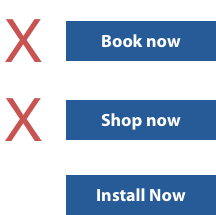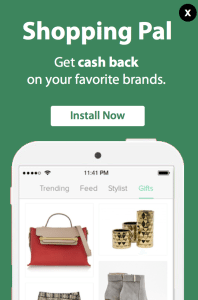5 Most Common Mistakes in Designing App Install Ads
![]() Three. That’s how many times a Director of Marketing I know opened her desktop computer during her recent maternity leave. Instead, nearly all of her online activity happened on her mobile phone and tablet. As a marketer who’s product is almost entirely optimized for a desktop browser, this was a wake up call for her.
Three. That’s how many times a Director of Marketing I know opened her desktop computer during her recent maternity leave. Instead, nearly all of her online activity happened on her mobile phone and tablet. As a marketer who’s product is almost entirely optimized for a desktop browser, this was a wake up call for her.
As our connected time spent rapidly shifts to mobile, so must we as marketers develop competitive mobile strategies to attract and engage consumers. With apps making up 86% of time spent within a mobile device, mobile app marketing has already become a critical advertising channel for many verticals. Growing your app installed and engaged user base is the first step.
Whether you are already spending budget promoting your app or planning to, one of the first and biggest mistakes marketers make is with their ad creatives. In our experience, mobile display ads are almost never well-optimized for mobile: the ads need to be very different from traditional advertising given the smaller screen size and that people interact with apps in short, ephemeral bursts. And the stakes of a poor performing mobile ad are high. A poorly designed ad will torpedo a campaign right from the start. And it has incredible influence over the success of the campaign.
5 Most Common Mistakes in App Install Ad Creative
1. No call to action
Call this a classic performance marketing mistake but we see it happening again in spades with mobile ad creative. Consumers need a prompt as to what you are asking them to do. “Shop Now”, “Find Love Today”, and “Book Now” are all great examples of strong calls to action. However, for mobile marketers looking to drive app installs, there’s an even clearer call to action.
2. Failure to use the word “install” in the call to action
Apps need to be installed. And people know it. Don’t make people think about what you want from them in your ad. By using “Install Now” as your call to action, you provide a clear expectation of what action you want the user to take. “Install Now” works because it’s a low friction call-to-action and easy to say “yes” to.
3. Ad creative is missing a screenshot of the app
Just like movies, consumers want a sneak preview before installing and making a purchase or spending time with your app. Remember, installing an app is different than visiting a website. Users must first install an app before they can experience it. Set their expectations with a screenshot of your app inside a phone and they will be more likely to click through to the app store and read more about your app.
4. Ad copy fails to describe what the app does
Consumers not only need a visual preview of the app, but also a written description of the functionality and benefits. Tag lines that highlight deals or savings tend to perform the best.
5. Brand focused creative held to performance marketing metrics
A common mistake new advertisers make in app marketing is repurposing existing brand-focused creative with the hope that it will drive app installs or app re-engagement. This usually happens because creative resources are too busy to build mobile-specific performance ads, or because of stringent brand guidelines. If this is your circumstance,, consider lowering your performance expectations. Branded ads don’t typically perform well for driving installs or high value post-install actions. Consumers will see your ads, however, so it’s still valuable to measure success via the conventional brand metrics.
With the holidays just around the corner, improving your app install ad creative can produce big wins and help make this a happy holiday for mobile marketers.
—–
Happy Holidays from all of us at Liftoff!


